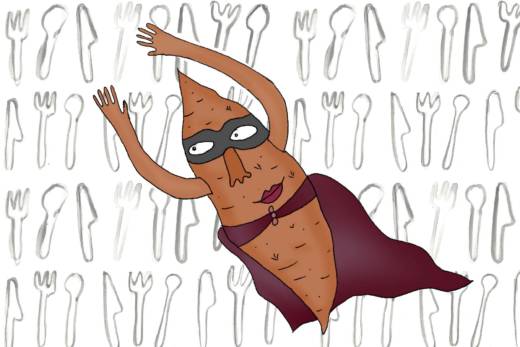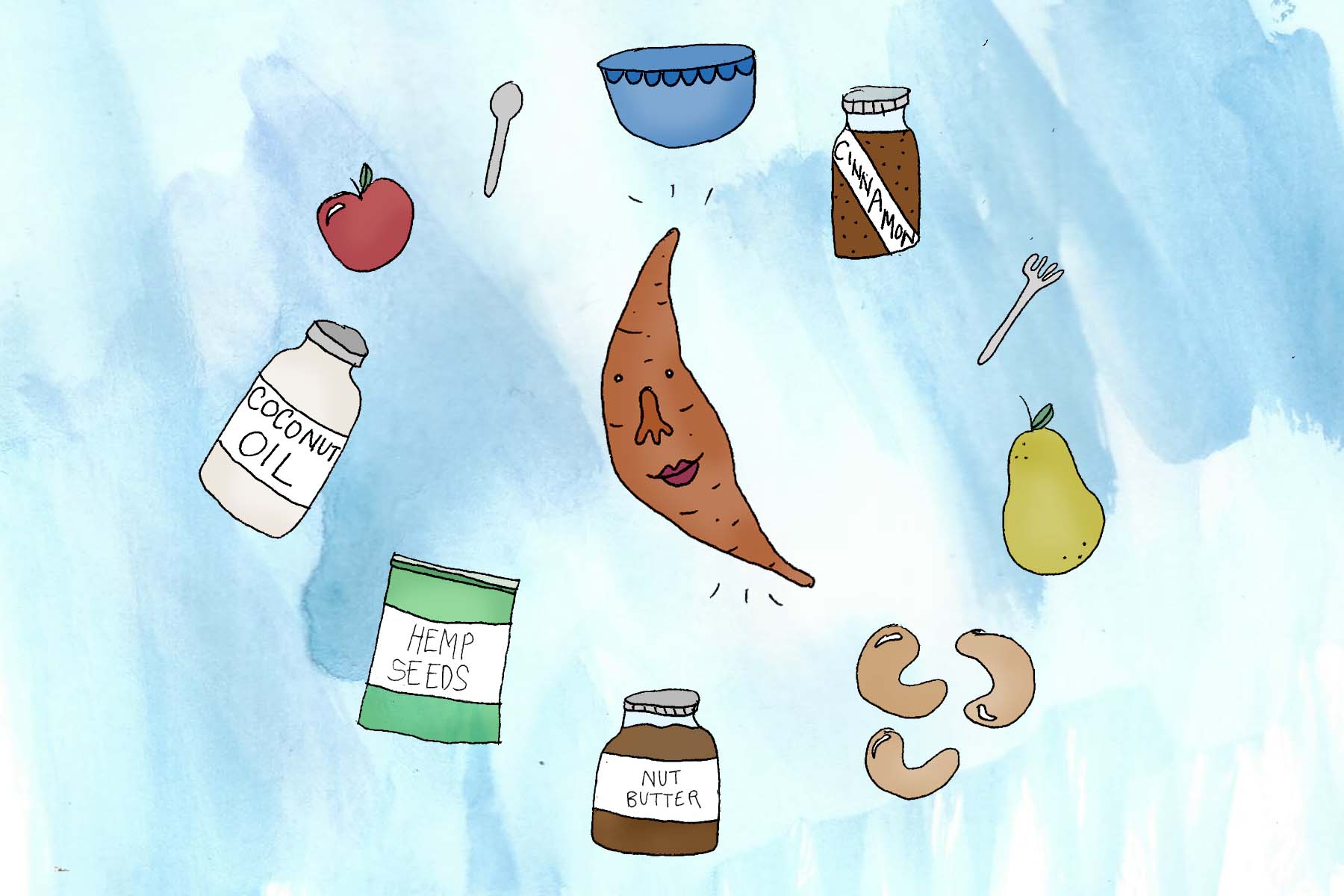For a holiday party my friend, Rachel, requested I bring a yam casserole, “The kind with lots of marshmallows and brown sugar, so don’t make it too healthy Lila,” she said. As a kale-massaging, kombucha-brewing, holistic nutrition student at Bauman College, that’s not exactly the kind of dish I usually make. So I hit the Internet. I happened upon Paula Deen’s Ol’ No. 7 Yams, however, the recipe calls for 4 large sweet potatoes. Wait a minute I’m confused, yams and sweet potatoes are the same thing, right? I decide to resolve the yam vs. sweet potato dilemma.
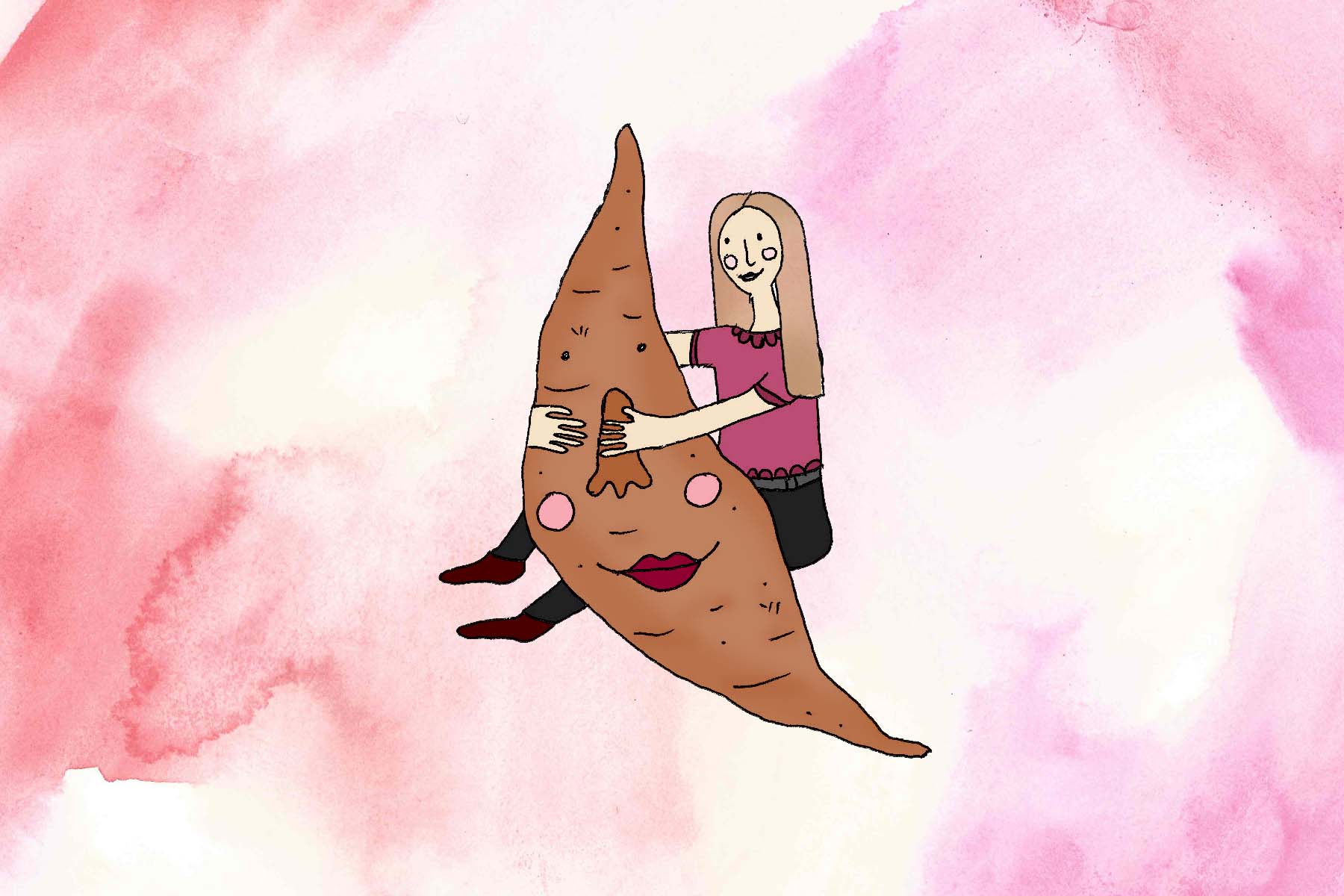
I learned that in a typical American grocery store you are going to find one of the 400 varieties of sweet potatoes (Ipomea batatas) that grace the produce section with smooth orange, brown, or purple skin. Even with the label “yam,” these blocky or tapered tubers are actually sweet potatoes. I was suprised to discover that in grandma’s candied yam recipe I would be as likely to find true yams (Dicomes genus) as durian, a pungent fruit from South East Asia. True yams are grown in Africa and the Caribbean. They are cylindrical in shape, have a rough and almost hairy exterior and taste earthy with minimal sweetness. Just to make this vegetable situation even more complicated, a sweet potato is not even a potato! Sweet potatoes belong to the morning glory family along with jicama, while conventional potatoes belong to the nightshade clan along with peppers, eggplants and tomatoes.
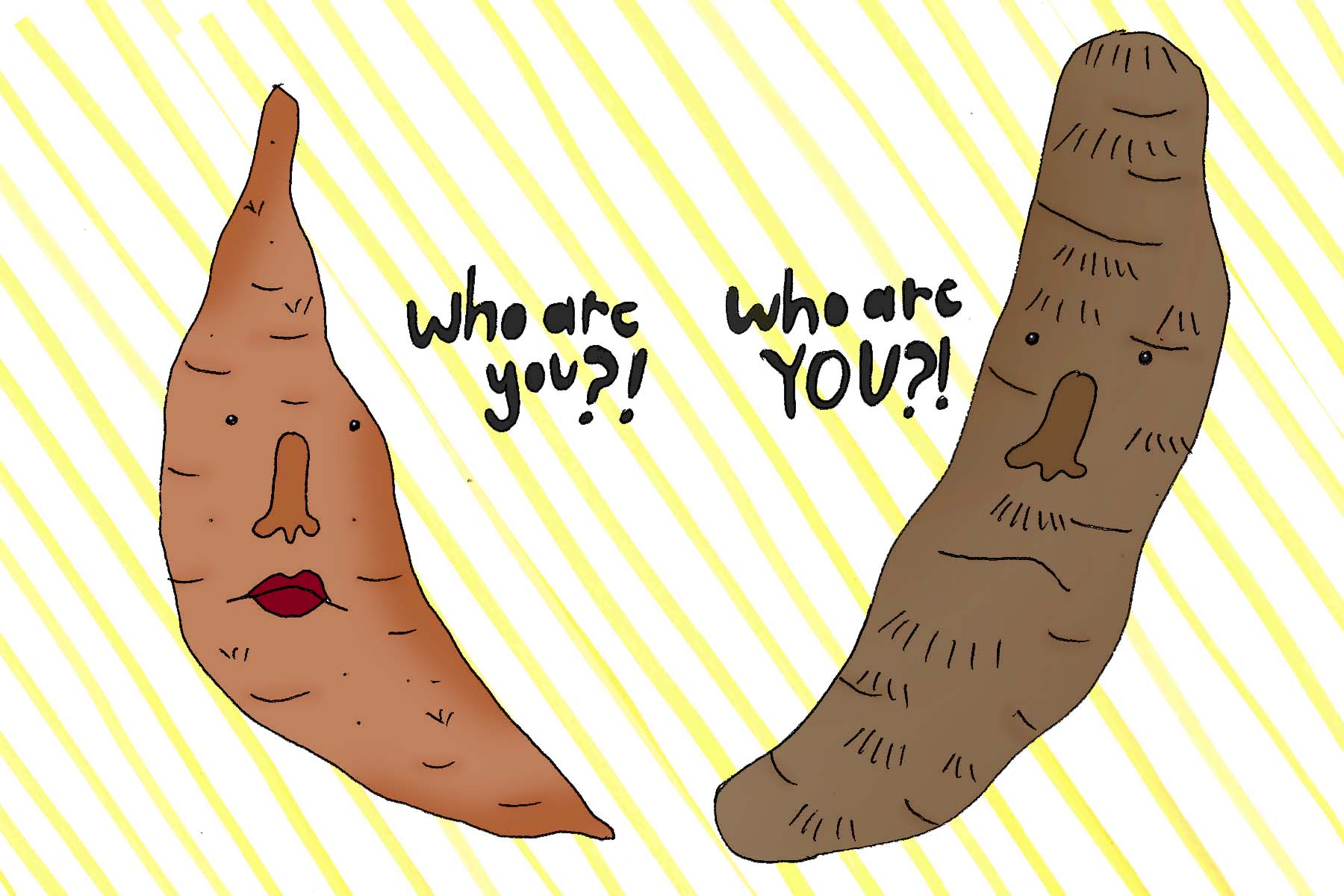
How did we get into this squishy orange mess?
When the orange variety of sweet potatoes was introduced to the US during the mid 20th century, the word “yam” was used as a marketing term to distinguish this variety from the white-fleshed sweet potato. “Yam” comes from the African word for the Dicomes genus, “nyami.” If you feel inspired to try one these “true yams” you’ll have to make your way to a specialty African or Asian grocery store.
The sweet potatoes we eat -- no matter what we call them -- are one of the oldest known vegetables. They have been consumed since prehistoric times and were even found in Peruvian caves dating back 10,000 years ago. (Encyclopedia of Healing Foods)
Sweet Potato, the Super Tuber
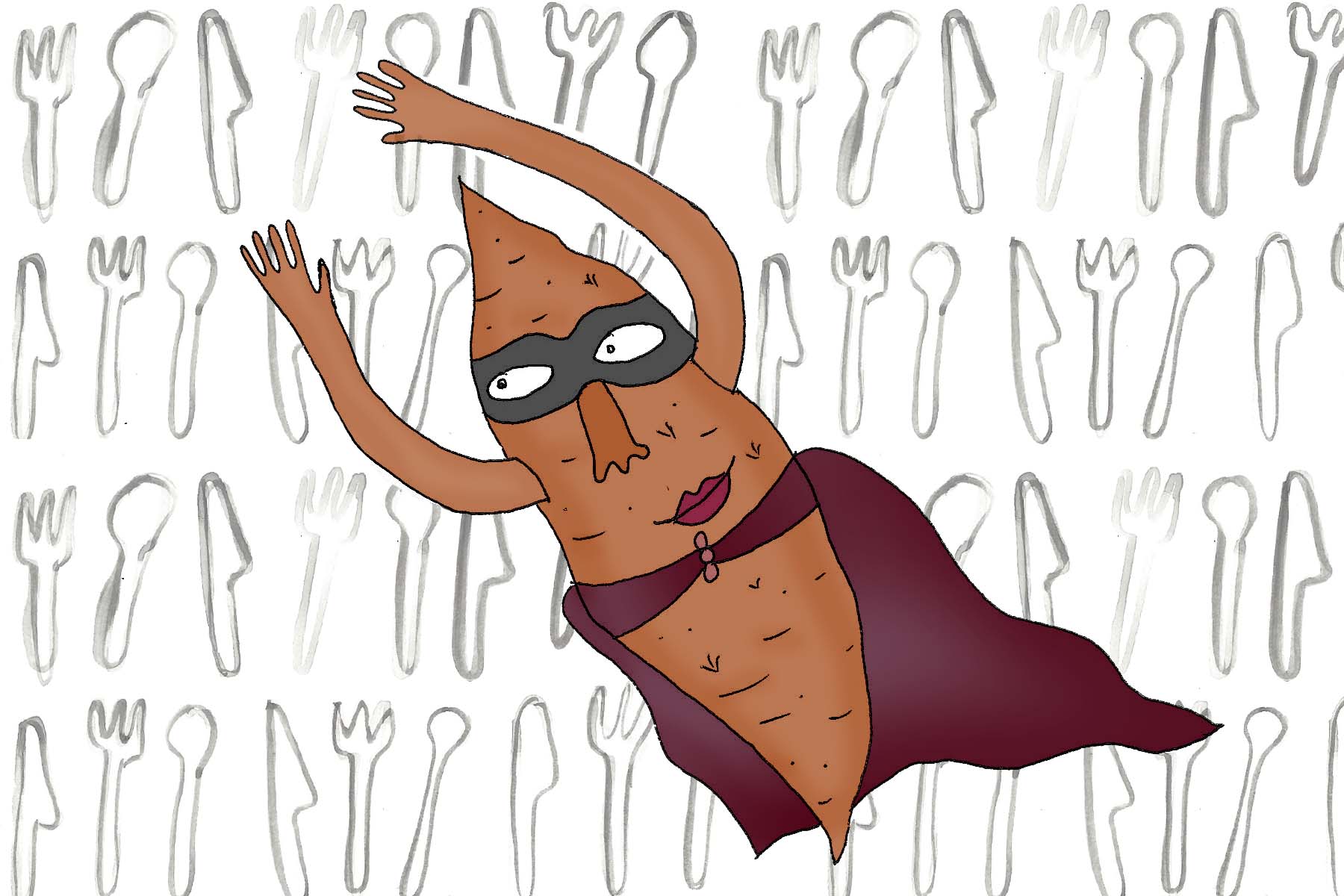
As a holistic nutrition student I am always looking to identify the health benefits of what I am eating and sweet potatoes happen to be quite a noteworthy vegetable. They are a great antioxidant boosting food with high levels of vitamin C and carotene. They are also an excellent source of B6, manganese, copper, biotin, pantothenic acid and dietary fiber. Animal studies have shown that these tubers can help stabilize blood sugar and improve insulin response, making them a helpful anti-diabetic food. (Encyclopedia of Healing Foods)
